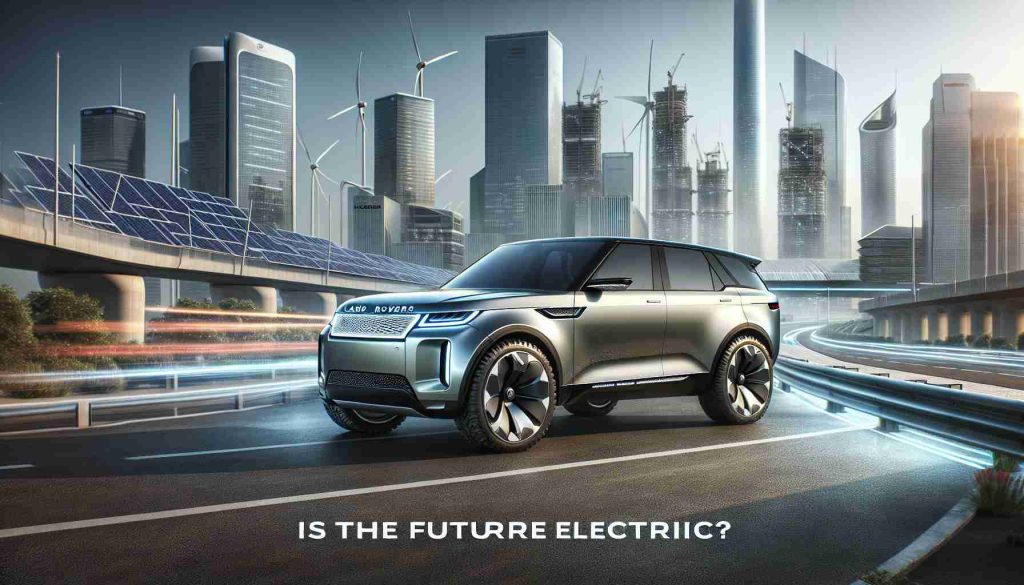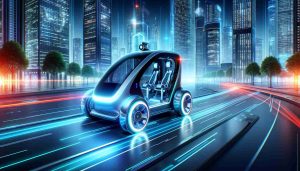Is the Future Electric? Land Rover’s Ambitious Plans
5 min read
The Challenge of Electrification
Recent discussions highlight the challenges Jaguar Land Rover (JLR) faces in transitioning its iconic models to electric vehicles (EVs). Notably, the beloved Land Rover Defender presents unique hurdles. With its rugged design and off-road capabilities, the Defender should theoretically accommodate the batteries needed for long-distance travel. However, the realities of adaptation are more complex than simply swapping out the internal combustion engine.
JLR’s chief commercial officer detailed the significant difficulties involved in retrofitting the current Defender model into an EV. Specifically, the spatial limitations created by the vehicle’s structure, including axle placement and essential off-road equipment, complicate the integration of necessary battery systems.
Despite these challenges, JLR remains committed to electrifying its entire range, which includes the Defender alongside other popular models like the Range Rover and Jaguar. The timeline for this transition is still uncertain. It remains to be seen whether future model generations will embrace electric technology or if existing platforms can evolve to meet these needs. Another potential route could involve introducing a separate electric version, similar to the approach taken by other manufacturers, like Porsche with the Macan.
While the electric version of the Defender may be a long way off, the ongoing discussions within JLR signal a promising future for those eager to see electric technology in this iconic brand.
The Broader Implications of Automotive Electrification
The transition to electric vehicles (EVs) at companies like Jaguar Land Rover (JLR) underscores a pivotal shift within the automotive industry, reflecting broader societal and cultural transformations. As traditional gas-guzzling vehicles make way for their electric counterparts, consumer preferences are also evolving, pushing for more sustainable and environmentally friendly options. This growing demand for electrification could signify a broader cultural shift towards eco-consciousness, particularly among younger generations, who increasingly prioritize sustainability in their purchasing decisions.
Moreover, the global economy is poised for significant change as automotive manufacturers adapt to new technologies. The shift to EVs is expected to foster innovation within supply chains and stimulate job creation in sectors such as battery production and renewable energy. Estimates suggest that the EV market could be valued at approximately $800 billion by 2027, highlighting the economic stakes involved in this transition.
However, the push for electrification comes with environmental concerns. The production of batteries requires mining for lithium, cobalt, and nickel, which poses challenges related to land degradation, water use, and social equity in mining communities. As the world grapples with climate change, balancing these environmental effects with the benefits of reduced carbon emissions from EVs will be crucial for sustainable development.
In the long term, the trend towards electrification could redefine mobility itself. Expectations for autonomous electric vehicles, shared mobility solutions, and smart infrastructure may lead to a more integrated transportation ecosystem, promoting efficient urban planning and reduced congestion. The possibility of greater interoperability among different modes of transportation can further enhance this evolution, setting a course for a significantly more sustainable future.
Jaguar Land Rover’s Electrification Challenge: What to Expect
The Challenges and Innovations in Transitioning to Electric Vehicles
Jaguar Land Rover (JLR) stands at a pivotal moment in its history as it seeks to transition its iconic vehicles, particularly the Land Rover Defender, into the electric vehicle (EV) market. This challenge is not merely a matter of replacing internal combustion engines with electric ones; it involves navigating a complex landscape of engineering, consumer expectations, and market dynamics.
Features and Specifications of the Electric Defender
As JLR explores the electrification of the Defender, several specifications and features have been discussed:
– Battery Capacity: Future models may require high-capacity batteries to meet the extensive range demands of off-road users, possibly exceeding 90 kWh.
– Four-Wheel Drive Systems: Transitioning to electric may involve innovating four-wheel drive systems to enhance off-road capabilities while providing sufficient power and torque.
– Weight Management: Maintaining the vehicle’s ruggedness while managing the additional weight of batteries will be a critical engineering challenge.
Pros and Cons of Electrification
# Pros:
– Reduced Emissions: An electric Defender could significantly lower the carbon footprint compared to its traditional gasoline counterpart.
– Innovative Technology: Adopting EV technology could lead to advancements in vehicle features, such as improved traction control and real-time performance adjustments.
– Market Competitiveness: Electrification aligns JLR with growing consumer preferences for sustainable vehicles, potentially boosting sales.
# Cons:
– High Development Costs: Research and development for new electric platforms can be prohibitively expensive.
– Space Limitations: The current design of the Defender presents challenges in fitting batteries without compromising off-road capabilities.
– Market Hesitation: Long-time fans of the Defender may be hesitant about embracing an electric version, leading to potential backlash.
Market Trends and Consumer Insights
Recent market analyses indicate a growing consumer interest in EVs, especially in the luxury segment. Reports suggest that brands that invest in electrification now may secure a significant advantage in the market as consumer demand shifts. JLR’s existing customer base, which appreciates the rugged and adventurous spirit of the Defender, may also evolve to embrace electric options—provided that the brand can deliver the same level of performance and reliability.
Pricing Predictions for Electric Models
While precise pricing for an electric Defender has yet to be released, industry analysts predict that electric variants of luxury SUVs will generally carry a premium due to their advanced technology. Comparisons with competitors, such as the electric Porsche Macan and Tesla Model X, hint at starting prices likely exceeding $80,000 for the electric Defender, depending on the specifications and market positioning.
The Future of Jaguar Land Rover’s Electrification Journey
As JLR forges ahead with its electrification goals, it may be beneficial to look at a phased rollout of electric vehicles. Initial offerings could focus on hybrid models, providing consumers with a transition period to adapt to electric technology. Over time, as technology improves and consumer acceptance grows, JLR could fully commit to electrifying its lineup.
For those interested in more about the electrification journey of automotive brands, visit Jaguar Land Rover for the latest news and updates.
In conclusion, while JLR faces substantial hurdles in electrifying its iconic Defender model, the ongoing commitment to this transition is likely to shape the brand’s future and the larger automotive landscape for years to come.



